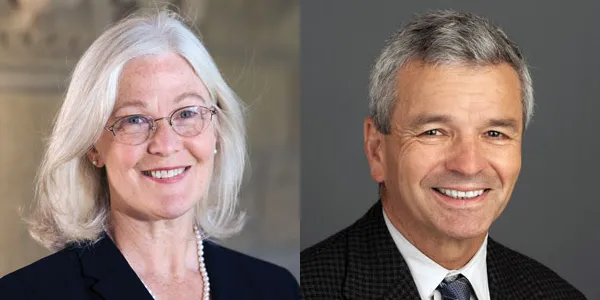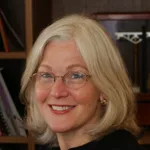
Stanford Report - June 10th, 2009 - by Rosanne Spector
A report by two of the medical establishment's foremost organizations lays out a new framework for preparing students with the scientific know-how optimal for studying medicine and becoming doctors. The report, Scientific Foundations for Future Physicians, issued June 4, is based on recommendations of a committee co-chaired by Sharon Long, PhD, Stanford professor of biology and the former dean of the School of Humanities and Sciences.
The report recommends substantial changes in the academic requirements for medical school admission. Instead of a uniform nationwide list of required courses, the report proposes a set of competencies—defined as knowledge, skills and attitudes—which could be accomplished through more flexible curricula including interdisciplinary courses.
The report recommends substantial changes in the academic requirements for medical school admission.
The report also suggests a list of competencies MDs should master before graduating, along with learning objectives and examples for each competency. These emphasize the increasing role of physical sciences and mathematics in the skills needed for medical practice.
How would training in competencies differ from the current system? "Think about it this way," said Long. "You can get from the first floor to the second by going up a ramp or by taking the steps. Right now the medical school entrance exam assumes the only way is the steps, and it tests you on each one. We want the exam to test whether you can get to the second floor, not how you got there—because then faculty can innovate how they teach the principles."
The medical school's dean, Philip Pizzo, MD, and senior associate dean for medical education, Charles Prober, MD, said the report helps to launch a conversation nationwide among medical schools about how doctors are trained. "The committee does an excellent job of defining the overarching principles that should guide current and future medicine and its practice," said Pizzo.
In 2007, the Association of American Medical Colleges, which oversees the MCAT medical school entrance exam, and the Howard Hughes Medical Institute, a major non-profit funder of biomedical research, formed the 22-member expert committee to update the nation's long-standing requirements for medical school admission.
The membership of the committee, drawn from undergraduate and medical school faculties at diverse institutions, also included co-chair Robert Alpern, MD, dean of medicine at Yale University, and Stanford's Robert Siegel, MD, PhD, associate professor of microbiology and immunology. The report identifies eight broad scientific competencies that individuals should master prior to entering medical school, and eight competencies to be mastered before receiving an MD. Long and Alpern authored an editorial published in the June 5 issue of Science in which they introduce the study and call for national discussion among educators.
For premedical study, instead of the standard medical school entrance requirement to have passed calculus, the report recommends students demonstrate the ability to "apply quantitative reasoning and appropriate mathematics to describe or explain phenomena in the natural world." To replace general chemistry and organic chemistry course requirements, the report suggests applicants "demonstrate knowledge of basic principles of chemistry and some of their applications to the understanding of living systems" and "demonstrate knowledge of how biomolecules contribute to the structure and function of cells."
The competencies for medical students focus on the prevention, diagnosis and management of disease, and on interaction with patients. For instance, one competency for MD graduates is to "apply principles of the biology of micro-organisms in normal physiology and disease to explain the etiology of disease, identify preventive measures and predict response to therapies." Another competency relates to the physical sciences: "Apply major principles of physics and chemistry to explain normal biology, the pathobiology of significant diseases, and the mechanism of action of major technologies used in the prevention, diagnosis and treatment of disease."
The committee set out to devise an education framework that would accomplish two major goals, said Long: Encourage the development of interdisciplinary science curricula for undergraduates and medical students, and maintain flexibility so that premed students can dedicate themselves to classes outside of the premedical requirements, and even major in a non-science field if they desire.
"We hope that undergraduate innovations will be able to introduce new material, such as statistics and biochemistry, without increasing the total amount of science required for premedical study," said Long. "Our committee unanimously agreed that undergraduates should pursue a strong liberal arts education. The ability to think critically and synthesize information—vital to any physician—can be gained or learned through study or majoring in many different fields, not just in the sciences."
A group reviewing the MCAT has read the report and is taking it seriously, said Long. The review, slated for completion by 2012, will recommend changes to increase its usefulness to medical schools.
"I see this report as an opening to a renewed discussion within undergraduate programs, ideally in collaboration with medical schools," said Pizzo. "This report should as a result allow educational innovation to blossom at colleges and medical schools.
"We agree with the emphasis on the interdisciplinary nature of future medical practice," added Pizzo. "What is needed is a radical reform of premedical education in tandem with greater integration of science and clinical medicine in medical school and throughout the life of the physician." How these principles would best be accomplished will vary from school to school and student to student, he added.
Long sees Stanford's strength in multidisciplinary research and teaching as likely to spur new courses. "For example, the undergraduate interdepartmental program Mathematics and Computational Sciences combines math, statistics and computer programming in a way that's already interdisciplinary—so the faculty in that program would be in a perfect position to develop a yearlong series that uses both statistics and calculus to teach fundamental principles, hypothesis testing, modeling and so forth. I hope our faculty embrace the opportunity to innovate."
The medical school already has courses that reflect the ideas in the report. One example, said Prober, is the "Translating Discoveries" class, which students take when they've begun working with patients. In this course, students meet six times a year for a 1½- to 2-hour session with faculty who talk about the basic science relative to a particular disease, introduce a patient with the disease and describe a discovery that has affected treatment of the disease.
"The report presents the imperative of maintaining a strong basic science education that is integrated with clinical education. That's something we are already working toward," said Prober. "I believe that the optimal education of the best-trained physicians of the future requires the thoughtful integration of basic science principles with clinical medicine. Our obligation is to create and support a curriculum and environment that facilitates the acquisition of integrated knowledge, while providing the foundation for lifelong learning. This is especially critical given the rapid expansion of scientific knowledge.
"We have a unique opportunity at Stanford because the medical school has a close relationship physically and intellectually with the rest of the university," he said. "If any school is going to be able to work collaboratively on initiatives that link undergraduate and medical education, it will be Stanford. We're in a good position to test-drive change."

